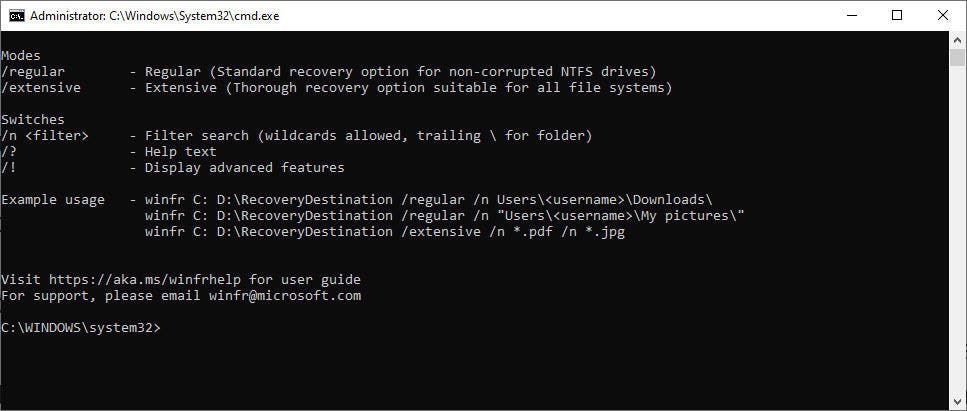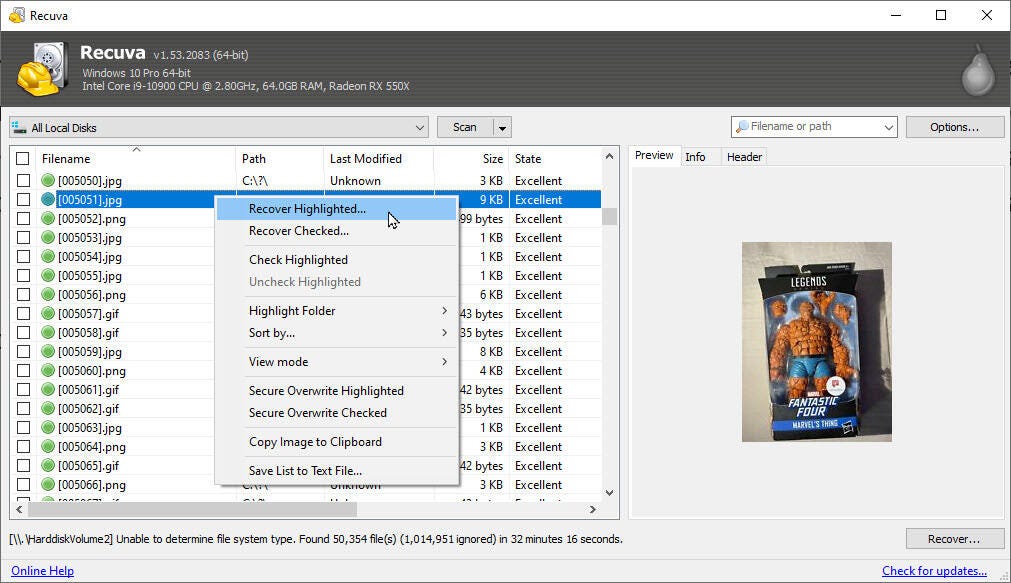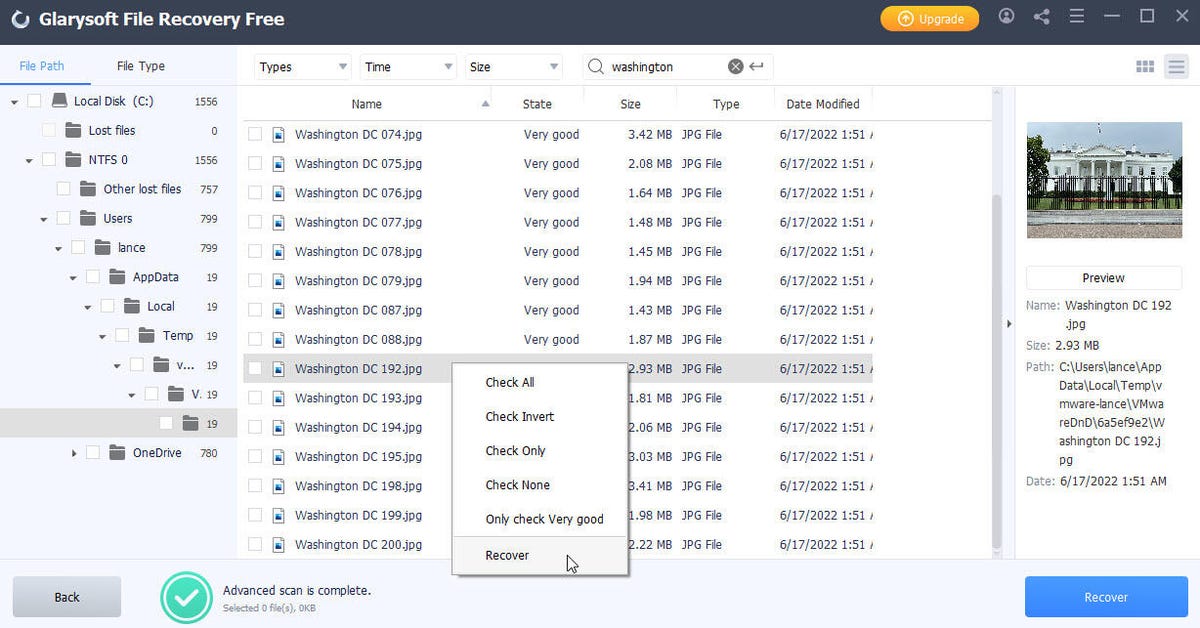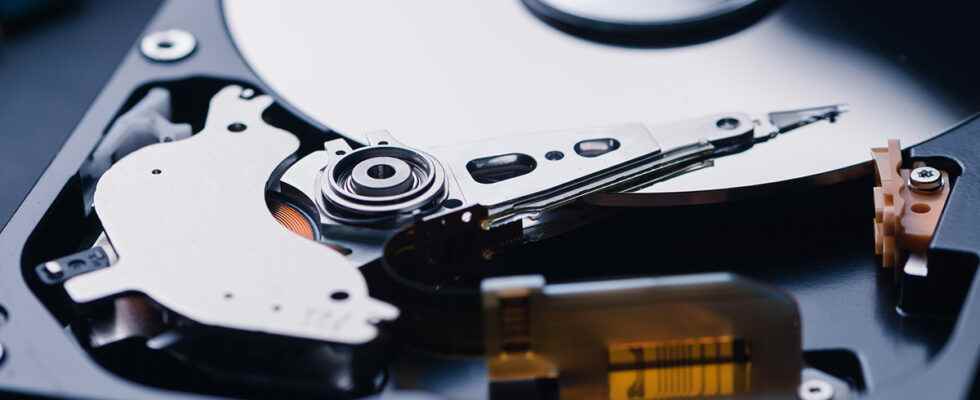Are you having trouble finding a certain file on your Windows PC and you think you deleted it? Everyone has been there. But rather than moping around, you can try to get it back. If you’ve already explored the Recycle Bin and found nothing, it’s time to turn to a good old dedicated recovery tool.
Microsoft offers its own command-line recovery program, but it’s not very user-friendly. Instead, you can use free programs like Recuva and Glarysoft File Recovery Free.
Here’s how all of these tools work.
How the recycle bin works
You’ve probably used the Recycle Bin to recover a file. Basically, Windows dedicates a small percentage of your hard drive space to a hidden system folder called “Recycle Bin”. This ensures that deleted files are not actually deleted, but rather are kept in reserve. As long as you don’t permanently delete the file or empty the Trash, the file should be recoverable.
To explore this folder, just click on the trash can icon on your desktop. As with any folder, you can sort files by name, location, date, and other criteria. You can also search for a file by its name. If you find the correct file, right click on it and select Restore.

Screenshot by Lance Whitney.
How a File is Deleted on Windows
If you permanently delete a file (by pressing Shift + Delete) or you completely empty the trash, recovering a file is more difficult, but still possible. It mainly depends on the time before which you perform the manipulation
.
When you delete a file, the data is not physically deleted from your disk. On the other hand, its space is marked as available by the operating system, which means that the memory space allocated to this file can be overwritten by new data. If you intervene quickly enough, the file may be fully intact and recoverable. But the longer you wait, the more likely it is that most (or all) of the space reserved for the file will be overwritten, reducing the chance of recovering it cleanly.
Using Windows File Recovery Software
Microsoft offers a command-line utility for Windows 10 and 11 that can recover deleted files. Known as Windows File Recovery, the tool supports common hard drives, SSDs, USB drives, and memory cards. It also offers a normal and extended mode to attempt to revive a file.
Download and install the program from the Microsoft Store. Once launched, it opens a command prompt with basic syntax examples. Microsoft also offers a help page with instructions on using Windows File Recovery.
To make it simple, it is necessary to type the command, followed by the new recovery destination, then the recovery mode, and finally the name or location of the deleted file(s).

Screenshot by Lance Whitney.
Because it works exclusively via the command prompt, Windows File Recovery can be difficult to use, as you have to master the appropriate syntax and options (a graphical interface is sorely lacking). And even then, it doesn’t always find or recover the files you need.
Microsoft’s program offers fairly random performance. You can try it for a first attempt, but probably a good third-party software will be less frustrating.
Third-party recovery tools
Third-party recovery software is generally quite reliable. Again, their effectiveness largely depends on how soon you attempt to recover a file after it’s been deleted. But, assuming the file is still fully (or mostly) intact, these tools will help bring it back to life.
There are a wide variety of programs, free or paid. Here are two free utilities worth trying.
Recuva
Available in both free and paid versions, Recuva is capable of recovering files from internal and external hard drives, USB drives and memory cards. The website offers the full version of Recuva, but there is also a portable version to install on a USB stick, which avoids writing new data to your hard drive.
Recuva is a free utility for Windows that allows you to recover files deleted by mistake or data lost following a system crash or a virus attack.
- Downloads: 84
- Release date : 07/20/2022
- Author : piriform
- Licence : Free License
- Categories:
Utilities - Operating system : Windows XP/Vista/7/8/10/11
When the program starts, a wizard asks you what types of files you are trying to recover and where they are. Recuva then scans the chosen location and displays all deleted files that can be recovered.
If you know the exact file name and path, you can bypass the wizard. Recuva offers a “normal” option for quick and easy recoveries and an “extended” option for more difficult cases.
After each scan, Recuva displays the names of the corresponding files and indicates the chances of successful recovery. You can even preview many file types. Select the file you are looking for and click the button Retrieve to restore it.

Screenshot by Lance Whitney.
Glarysoft File Recovery Free
There is another recovery tool available in both free and paid versions: Glarysoft File Recovery Free. The latter starts by asking which drives or partitions of your PC you want to scan. The program then runs a quick scan to find deleted files. During or after the scan, you can find specific files by type, location and name.
Recover accidentally deleted files
- Downloads: 1
- Release date : 07/25/2022
- Author : glarysoft
- Licence : Free License
- Categories:
Utilities - Operating system : Windows
Once the scan is complete, the tool will show you a list of all deleted files and their recovery potential, allowing you to search for the file you want. You can even preview images and other file types to make sure you’ve recovered the correct file.

Captured by Lance Whitney.
The biggest drawback of the free edition is that you can only recover three files, as long as their size does not exceed 2 GB. To go further, the Pro edition costs 60 euros per year. If you just need to recover one, two or three files, that said, the free version will do.
Source: ZDNet.com
